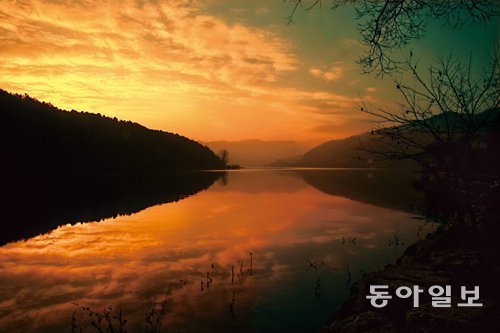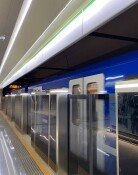Nami Tower made with burn wood of Seojangdae
Nami Tower made with burn wood of Seojangdae
Posted December. 03, 2016 07:06,
Updated December. 03, 2016 07:21

‘
Technically, the Naminara Republic is not an island. Nami Island was formed as it was inundated by the rising water of the North Han River as the result of the construction of Cheongpyeong Dam. In the 1960s, Nami Island was purchased by Mr. Minn Byeong-do (1916-2006), who had resigned from the post of governor of the Bank of Korea, with his severance payment. At that time, Nami Island was a desolate piece of land with only few mulberry trees on the fringes of a small peanut farm, which was cultivated by nine households. Such lonely island has completely turned into a beautiful place with full of trees thanks to landscaping work and tree planting. Mr. Minn became the very close friend of the owner of Cheollipo Arboretum Minn Byeong-gal (1921-2002). They almost had what amounted to a competition to see who could plant the most trees in Nami Island and Cheollipo Arboretum.
One of the most noticeable characteristics of the island is that the place has revived by recycling wastes. In other words, the source of vitality of the island is discarded wastes of which life cycle have ended. First example is the shore protection. It was natural that the place has witnessed much soil loss as it is located in the riverside, not an island. When all floodgates upstream and downstream are open due to heavy rain, the North Han River flows fast and the rapidly running water routes destroy soil of the land. The reinforcing stone walls were built to protect the shore and the stones used came from the runway of Yeouido Airport, which was removed in the 1970s.
Another example is thick plate glass that cover the fountain in Sang sang Maru and First Kiss Bridge. Samsung Securities contributed the large glass as the company relocates its head office in 2009 and the glass was classified as non-recyclable waste and Samsung had a difficulty to discard such large tones of glass. Green colored tiles that decorate everywhere of the island were made with empty soju bottles that were found while developing the island. A half of yellow gingko leaves in Songpa Gingko Tree Lane was sent by Songpa district office of Seoul by collecting gingko leaves in the district.
The essence of recycling is Nami Tower, a place where a general take the command. The two-story tower on a large stylobate is 10.8 meters tall and is the replica of Suwon Hwaseong Seojangdae (UNESCO World Heritage site), which was burn to ashes in 2006. The Naminara Republic has established the tower with the waste wood of Seojangdae by coordinating with Suwon City and the Cultural Heritage Administration. Roof tiles and lumber that are used to cover remaining spaces are also interesting. The timber was obtained by splitting dead pine trees during the Naksansa fire in 2005 and roof tiles were given from Ssanggyesa Temple in Jiri Mountain as it replaces its roof tiles. The decorating stone in the lawn of hotel Jeonggwanru is a stone with geometric patterns after removing milestone. Cho-ok atelier, a house with a fireplace, which was appeared in Winter Sonata, was built by restoring an old house that was abandoned for 100 years.
The revival and coexistence is the result of a solid and close cooperation with environmental associations. The main principle is to turn waste into a resource. Even a dead tree is used as a sculpture by standing it upside down and ashes of burned trees are used as lye in pottery workshops that make souvenirs. Cosmetic bottles sent by AmorePacific were reborn as the Lighthouse of Love and Peace at the entrance of the island.
There is UNICEF Hall in the island and the revenue of the hall is used for the child vaccination of developing countries. Visitors adopt stuffed dolls named AWOO (selling dolls are called as "adoption" in the island) and the money is spent to save children in the third world countries. Thus, Naminara is truly the island of life and the land of revival.
summer@donga.com







